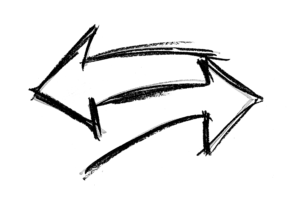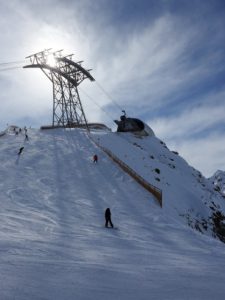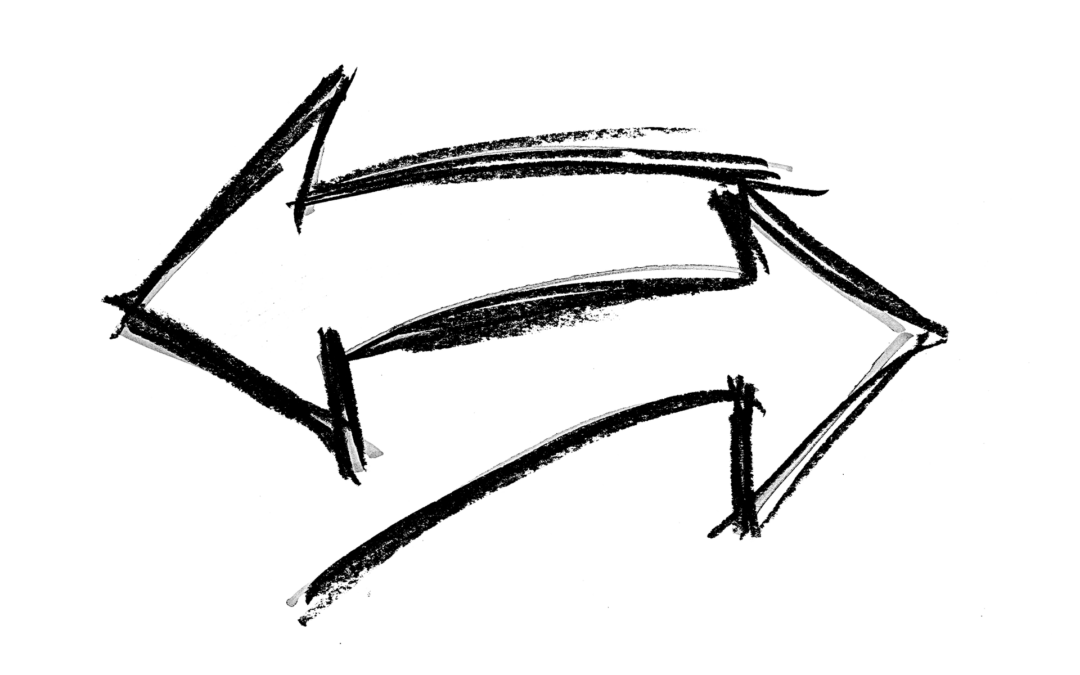Chemical equilibrium is the scary start of the second semester of AP Chemistry. Yes, you only have one month left, and you are likely studying acids and bases or electrochemistry now, but it is time to refresh chemical equilibrium. Because that’s the basis of the 4 heftiest concepts in AP Chemistry: equilibrium, acids and bases, buffers and titration, and solubility.
Here’s all you need to know about chemical equilibrium – as thorough and as concise as an online course can be.
While studying equilibrium there are 3 main things you need to know:
- Equilibrium is a reaction with a double arrow!

What this means is that it is reversible. AND the rates of the forward and the reverse reactions are the same.
It DOES NOT mean that the concentrations of the products and reactants are the same.
Analogy time:
Think of a ski slope with a lodge at the top. Imagine people going up the slope and comin g down the slope.
g down the slope.
The lodge has a max capacity of 15 people.
Initially the number of people going up is more than the people coming down – i.e., not equilibrium.
Eventually there are 15 people in the lodge.
Now for every person going up, there has to be a person coming down – i.e., equilibrium.
BUT, the number of people at the bottom of the slope is NOT EQUAL TO the number of people in the lodge (Think concentrations aren’t equal)
2. Every equilibrium reaction has a constant, K associated with it. You have heard this before:
Now this number doesn’t change. It is like the reaction’s social security number. It is always the same. Fine print: as long as the temperature doesn’t change.
3. When you flip/reverse the reaction, K becomes 1/K. When you multiply the reaction by 2, K becomes K2 and so on… When you add two reactions, their Ks multiply. Make sense?
4. To be involved in an equilibrium reaction, a substance has to be gas or aqueous. Liquids and solids don’t count, so you just ignore them and don’t include them in a reaction. The reason behind this is that solids and liquids (pure liquids, that is) don’t have concentrations. Concentrations are defined for solutions, which gases and aqueous solutions can be thought to be.
5. Le Chatelier’s principle:
This is a big one. What it says is that whenever you apply a stress on an equilibrium reaction, it reacts in a way to counteract that stress.
Sort of like a rebellious teenager…
So if you reduce the concentration of a reactant, the reaction would go backward to increase the concentration of that reactant.
Let’s check out a table that lists all the effects on equilibrium:
| Stress on the system | Response BY the system | Equilibrium shifts to: |
| Increase concentration of reactant/ Decrease concentration of product | Shifts to decrease concentration of reactant/ increase concentration of product | Right |
| Decrease concentration of reactant/Increase concentration of product | Shifts to increase concentration of reactant/ decrease concentration of product | Left |
| Increase volume (note this means a decrease in pressure) | Shifts to increase pressure by increasing number of (gas) moles | Shifts to side that has greater gas moles |
| Decrease volume (note this means a increase in pressure) | Shifts to decrease pressure by decreasing number of (gas) moles | Shifts to side that has fewer gas moles |
| Increase pressure by adding inert gas | No effect | |
| Increase temperature | Shifts to side with lesser heat | For endothermic, this is right,
For exothermic, this is left. |
|
Decrease temperature |
Shifts to side with more heat |
For endothermic, this is left, For exothermic, this is right |
Since ICE tables are a completely different ball game, that’s in the following post.

